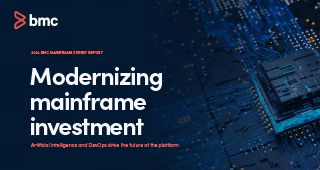It’s always important to look before you leap, especially with something as important and high-visibility as your mainframe software cost strategy. The most common model of IBM’s Mainframe Container Pricing that we speak with customers about is the Application Development and Test Solution (IBM Announcement 217-490). The DevTest Solution provides a discount on future growth of DevTest Containers on your mainframe. In previous blogs we have talked about the potential pitfalls of Container Pricing, but as more companies are moving to this model they are running into some new and interesting unintended consequences.
1. New Hardware Costs
If you have a need to grow your Test and Development Systems, then Container Pricing provides you an avenue to do so. But have you considered the amount of growth needed to get the best deal out of your Container Pricing? Is that growth going to consume the remainder of the capacity on your current machine? In some cases, customers are seeing this growth consuming full capacity of their current mainframe and leading to the need for a hardware upgrade. This likely wasn’t budgeted into the original “discounted” rate negotiated with IBM. Will the price of a new mainframe offset the discount you’re receiving by moving to Container Pricing?
2. Price per MSU Increase on Production Workloads
As with most pricing models, the more you buy the better per unit rate you receive. This is why buying in bulk is more cost-effective. The same is true on the mainframe, the more MSUs you consume, the cheaper per MSU rate. When you are on Container Pricing, you get to subtract the DevTest MSUs from your bill, as they are billed on a separate negotiated fixed term rate. When those MSUs are subtracted, you aren’t buying bulk anymore, meaning that the production MSUs you are using are now being billed at a higher average rate. This is especially true for small customers using business class machines. Will the increased rate you’re paying for your production MSUs offset your Container Pricing savings?
3. More MSUs Used to Run Production Workloads
Knowing your capacity is the key takeaway. As with the first point above, running more workloads on your mainframe will consume more capacity. Mainframe workloads are not linear, and if you run a production workload when you’re at 50% capacity it may take a set amount of MSUs. If you run the same production workload when you’re at 80% capacity of your machine, it will take more MSUs due to resource swapping. How close are you to being at full capacity? If you think you dodged a bullet above because you’re only at 80% capacity and not 100%, think again. Running the same workloads when your mainframe is at a higher capacity will take more MSUs and indirectly impact your monthly MLC bill. Is that something that you have factored into your budget?
BMC is here to help you mitigate these three unintended consequences of moving to Container Pricing and help you define your cost optimization strategy. BMC ZSolutions offers innovative, easy to use software that helps you model and measure the impact of moving to Container Pricing. You can better understand the capacity you will need, be better prepared to alleviate the above risks, and better equipped for negotiations with IBM. BMC provides intelligent capping decisions when you have Container Pricing workloads. If you are not using BMC tools to help manage your Container Pricing workloads, then it is likely that you are not efficiently allocating MSUs to the highest priority workloads and are putting your SLAs at risk. Learn more about BMC’s solutions or contact sales for a trial today.







